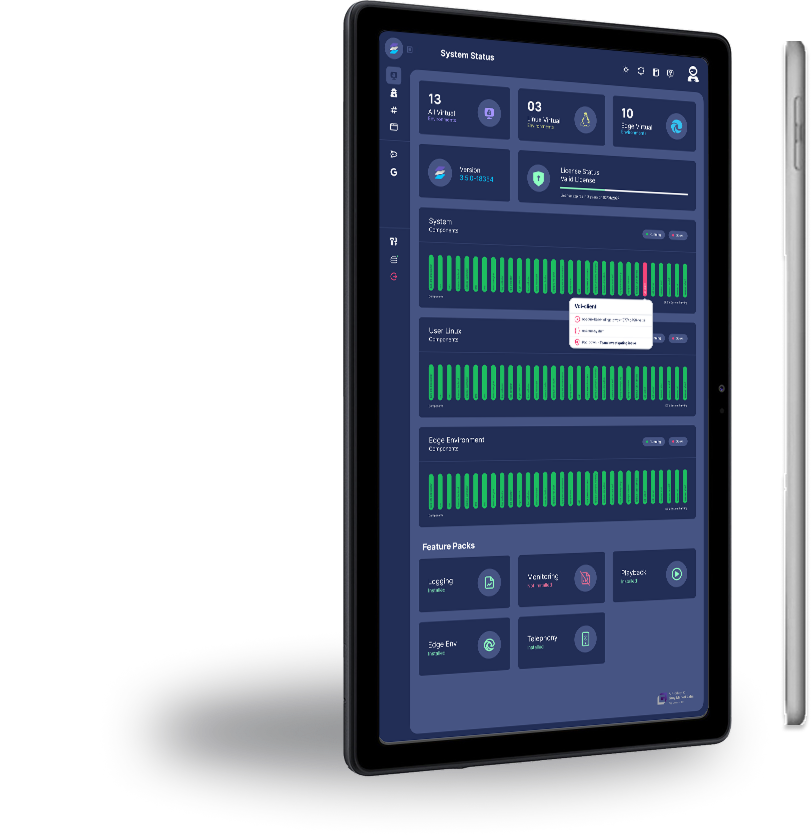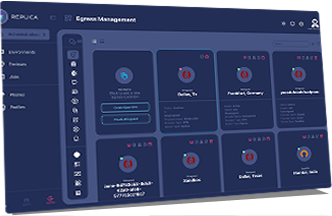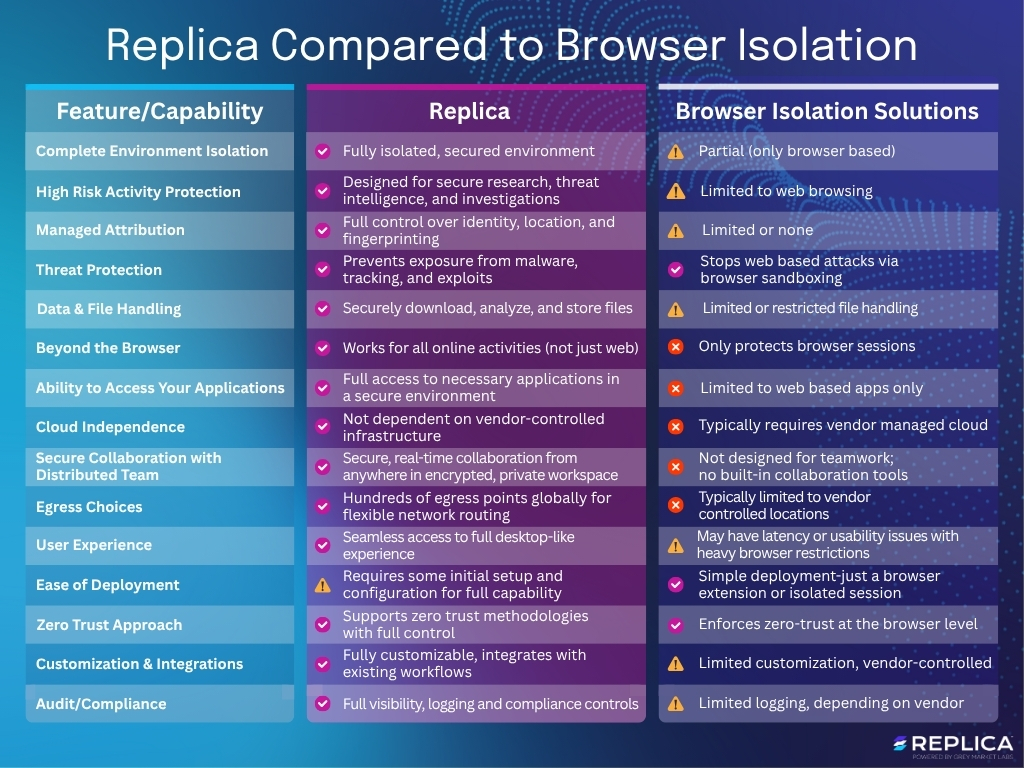Secure Environments for High-Stakes Work Instant. Isolated. Frictionless.
The world's first zero-trust isolated environments platform. Enable unrestricted innovation and conduct high-stakes work without sacrificing speed for security. Deploy secure isolated labs and workspaces in seconds—protected by our patented anonymous attack surface, enterprise observability, and comprehensive data controls.


Innovation Moves Fast. Your Security Model Should Too.
Legacy security architectures create friction and slow strategic initiatives. With 82 percent of breaches involving cloud assets and 75 percent of employees adopting unsanctioned tech, traditional perimeter-based approaches either leave you exposed or grind innovation to a halt.
Replica delivers full computing environments that empower organizations to conduct high-stakes work—securely and behind an anonymous attack surface. Our patented zero-trust isolated environments eliminate traditional trade-offs between security and speed.
- Full-Stack Isolation: Beyond browser—OS, network, applications, data protection end-to-end
- Built-In Managed Attribution: Unattributable access to restricted content with realistic digital personas
- SaaS-Delivered & Rapidly Deployable: Activate secure environments in minutes, not months
- Collaboration Without Compromise: Cross-team, cross-agency partnerships with complete auditability
Where Security Powers Innovation
Secure environments designed for innovation, mission-critical security, investigations, and operations.
Business Acceleration
Safely experiment with AI and test untrusted software, accelerate M&A workflows, enable secure third-party collaboration, and speed R&D innovation—all while protecting IP and maintaining compliance.
Fraud & Financial Crime Investigations
Uncover fraud and illicit activities by accessing hard-to-reach data worldwide. Gather evidence while maintaining compliance.
Dark Web Operations
Access and analyze content across dark web sources, closed forums, and restricted platforms while maintaining complete anonymity and chain of custody.
Advanced Malware Analysis
Isolate, detonate, and reverse-engineer malware and adversary infrastructure in a fully contained, disposable environment, without risking corporate networks or endpoints.
Isolation of Acquired Tech
Quickly gain control and oversight of technology and operations from mergers and acquisitions, ensuring seamless integration and maximized value.
Secure Investigation & Colab
Investigate threats across any platform anonymously – from mobile to restricted sources to closed forums. Automate collection and analyze safely without exposure.

Deploy Instantly, Without Friction
Security without complexity. Operations without limits. Replica activates in seconds, eliminating IT bottlenecks and seamlessly integrating with existing security frameworks.
Zero-touch deployment and maintenance
Scale instantly from 5 to 10,000+ users
Eliminate multiple, fragmented security tools with a single, unified platform
Comply seamlessly with enterprise security policies, governance, and audit requirements

Transform High-Stakes Work with Control and Compliance
Replica enables high-stakes operations with uncompromising security, seamless collaboration, and full compliance, protecting critical assets while ensuring complete control.
Securely accelerate AI experimentation, M&A, R&D, and strategic initiatives
Ensure comprehensive audit trails and regulatory compliance
Protect proprietary research, confidential data, and critical assets
Enable secure, controlled collaboration on classified operations

Features & Integrations
Built to work with your existing tools.
Flexible Network Options
Open API Architecture
Networks
Orchestrated Hybrid Environments
Comprehensive Observability
Proxies
Jobs and Automation
Telephony
Enterprise Integrations
Advanced File Sharing
What Our Customers Are Saying
Trusted by Industry Leaders to Power Secure Operations
“Replica gave us access to the data we needed around the world. The secure environments were always available and super flexible.”
Intelligence
Customer

"We were manually creating, maintaining and securing hundreds of VM’s for every contractor. Replica automated that process but gave us so much more insight and control over those environments."
SLED
Customer

“In the past year, we were able to complete three data collections. In one week with Replica, we were able to complete 30. This is game changing.”
Telecommunications
Customer

“I appreciate that Replica is flexible — there are different ways to deploy it, it is scalable, it is deployable, it is responsive, mobile, and it serves multiple markets.”
DOD
Customer











